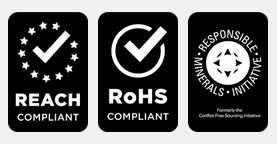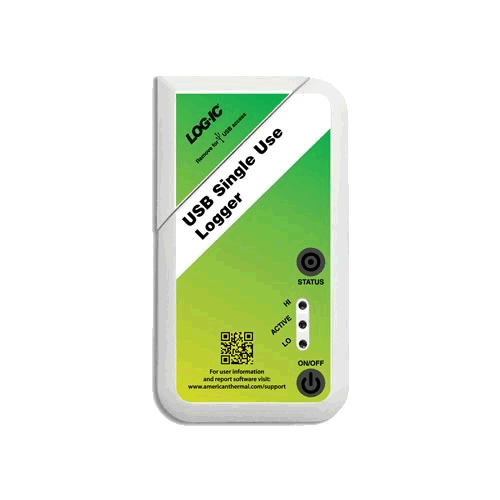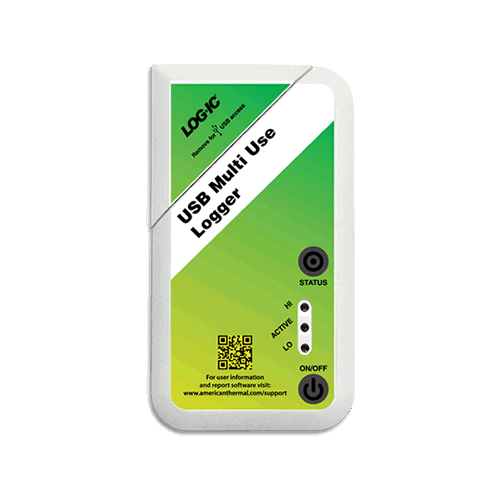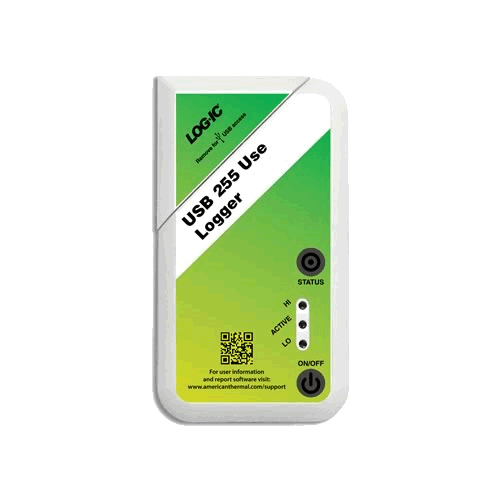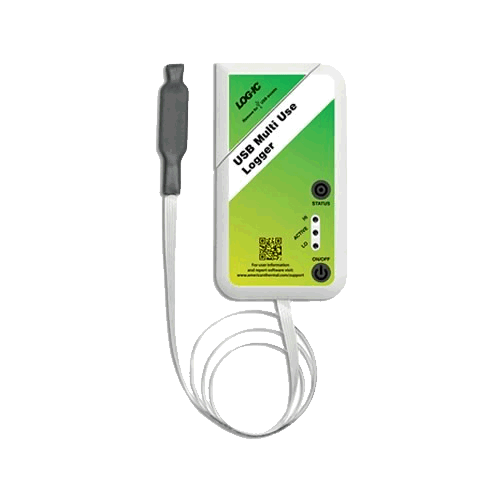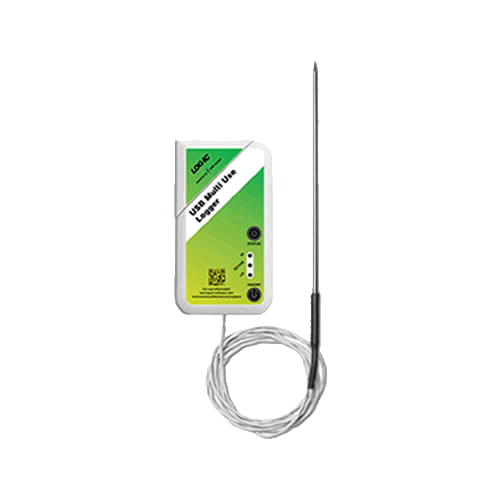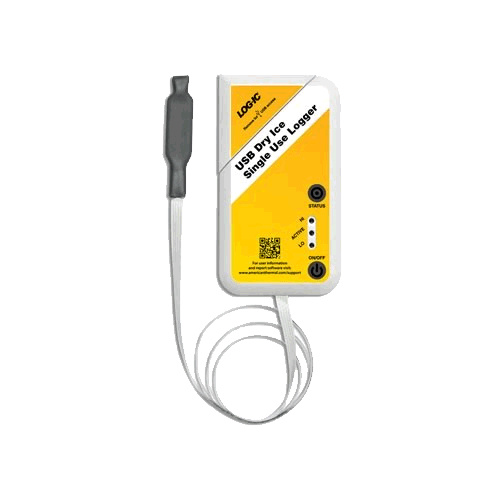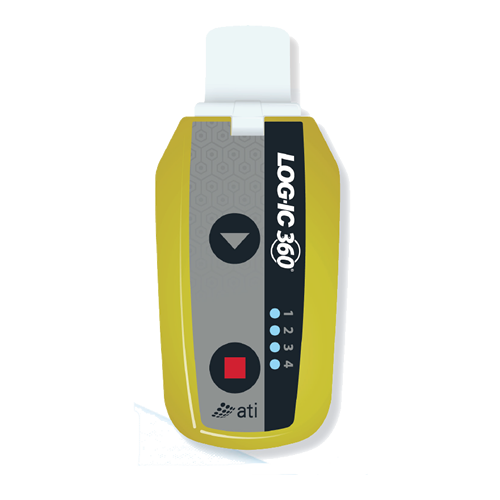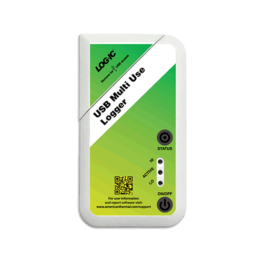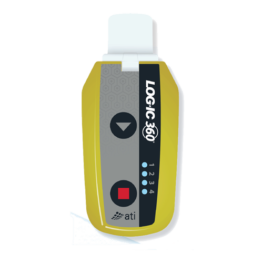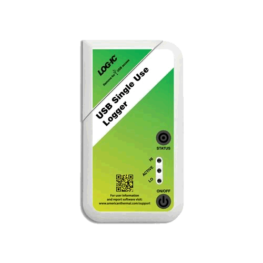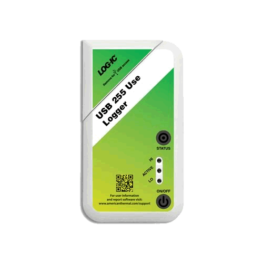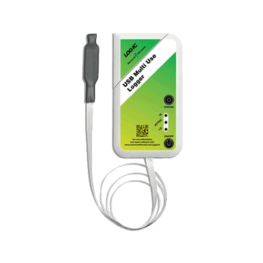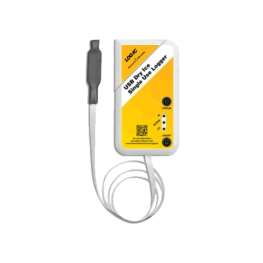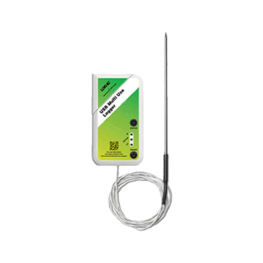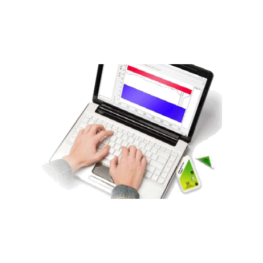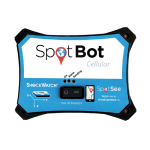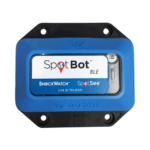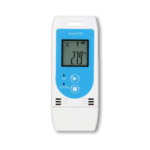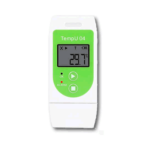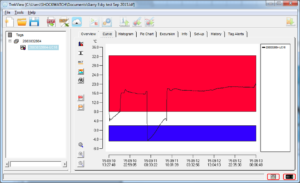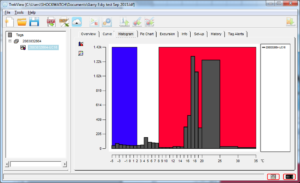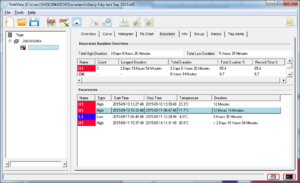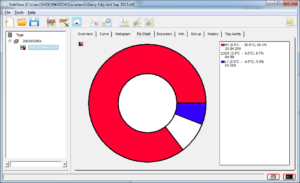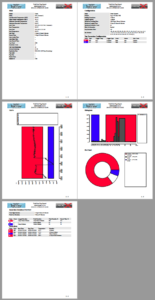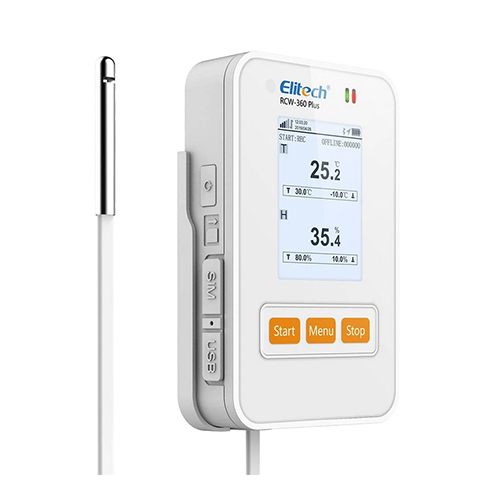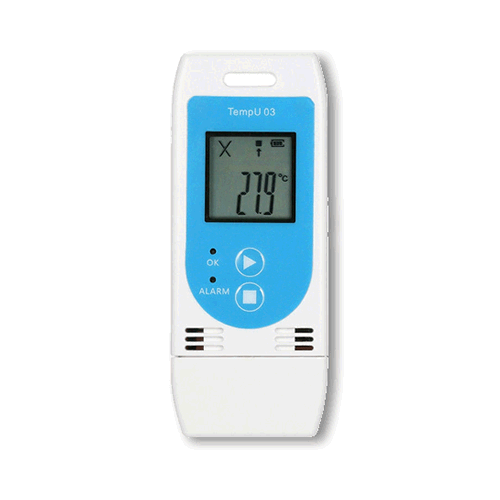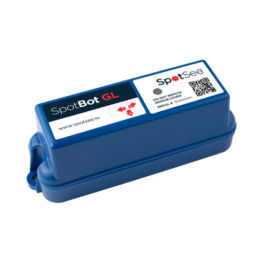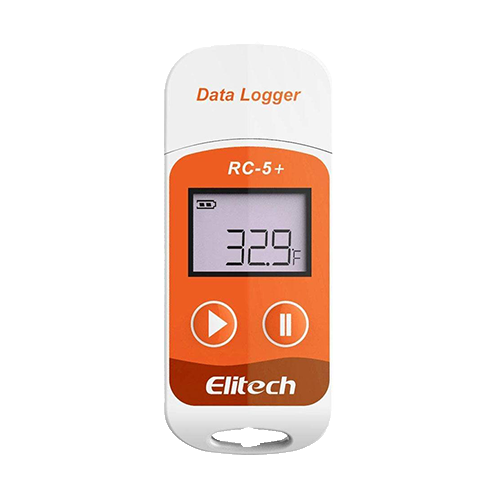Are the tags programmable?
Yes. The tags can be sent to a customer with a pre-programmed configuration or sent to a customer ready for configuring by the customer.
How do I know if the tag has been turned “on / off”?
Onboard the tag:
When the status button is pressed, there will either be a flashing green light or a steady green light in the Active Display window.
Flashing Green Light: The tag is in soaking, standby or off mode. If the on / off button was pressed to turn the tag on, wait until the programmed soaking period has expired to press the status button. If the on / off button is pressed during the soaking period, the soaking time will start again. Once soaking period has expired, the Active Display window will show a steady green light.
Steady Green Light: TrekView tag is recording.
Viewing status through software:
Scan the TrekView tag and view the Overview screen. In the Tag Mode Section it will display one of the following: “Recording”, “Off,” “Standby” or “Soaking.
Do tags stop recording when data is downloaded?
No, temperature data can be downloaded multiple times and will continue to record until the tag is turned off. Even if the “logged data” file fills, the tag will still record data in the histogram file, and track excursions.
What are temperature bins?
Temperature bins are “buckets” in which temperature readings are recorded. They are depicted in TrekView graphs as colored blocks. Tags record temperature every minute and place the temperature readings into a temperature bin. Temperature bin are preset values and are not programmable. Tags have the capability to store up to 16 million temperature readings in every temperature bin. Temperature bins do not store the same information as data points on a temperature curve graph. TrekView is the only data logger that has this added feature.
What is the significance of a temperature bin?
Typical data loggers only offer a temperature curve graph and are limited to 4,000 or 16,000 data points. A logging interval determines how often a data point is plotted on a temperature curve graph. If a logging interval is set to plot temperature every 60 minutes and an excursion occurs after one point is plotted, but before the next – the temperature bins will capture the excursion data where the temperature curve graph would not.
Can a tag be named?
Yes, using the User Data upload icon. Names can be inserted in the New Label and New Data fields.
Can multiple tag data be overlaid?
Yes, it is possible to overlay four (4) TrekView tags. All four tags must have the same configuration in order to overlay the data.
When a tag memory has reached 4,000 recorded data points, will the recording wrap around?
Tags do not support wrap-around memory usage. Once the tag has reached 4,000 recorded data points, it should be stopped and downloaded. However, as a safeguard, the TrekView will continue recording up to 48 excursions and the histogram will continue to populate.
Why can’t a tag be turned on by pressing the button after it has been have turned off?
A tag cannot be turned on after it has been turned off in order to protect recorded data. Once a tag is turned off, a fail-safe is built in whereby the tag must be placed into a start mode prior to being able to turn it back on using the button. This feature ensures that the data from the previous recorded session is downloaded and can be saved prior to being turned back on. Once a tag is turned back on, previously recorded information is erased and the tag’s memory is rewritten. This feature also prevents someone from tampering with the tag and only recording temperature when it is “convenient”. Tags need a time reference which can only come from communication with a reader on the start command.
What is the shelf life of a tag?
Four years in Off Mode.
What is the memory life of a tag?
TrekView data is logged in 4,000 logged data points; 53 histograms (each capable of storing 16 million temperature readings); 48 excursion records; Min / Max temperatures.
What is the battery life of a tag?
Tags have a battery life of up to three years in recording and / or standby mode.
What type of battery is used in a tag?
A standard lithium manganese dioxide, non-rechargeable, non-lithium ion battery is used in the TrekView tags.
Is a tag reusable?
Yes, the tags have 26 uses per tag.
What is a Use Count?
“Use Count” refers to the number of on / off cycles that a tag has recorded. The Use Count is tracked and visible each time tag data is downloaded. For example, when a tag is scanned or connected, the user will see its tag information, “2000014271-UC11”. UC represents Use Count. This tag is currently in its 11th use. Use count information is also available in the Info tab in the TrekView software.
How is the number of uses tracked?
After connecting a tag in the software, look in the left hand column of the software and view the tag of interest. After the tag ID number, the Use Count Number is displayed. For example: 2000014230-UC8 – is on its eighth use. UC stands for Use Count.
If the tag is UC4 but has recorded for three years, what happens?
The battery life in a tag is three years. Therefore, a tag can be used for three years or 26 uses whichever comes first.
Can a tag be configured multiple times?
Yes, configuring a tag does not use a use count. A tag may be configured an unlimited number of times. A tag must be in the Off Mode to configure.
If a tag is configured, does it use a Use Count?
No. Tags can be configured as many times as the user chooses. The tag must be in the OFF mode in order to configure.
How is data from a tag downloaded or retrieved?
There are a couple of ways in which data can be downloaded for review and analysis:
1) A desktop reader connected to a PC or laptop allows for quick scanning of multiple tags.
2) Direct connection of the tag to a PC or laptop through a USB connection.
How fast can data be read by the Desktop readers?
Data can be downloaded by the readers in less than one second by positioning the TrekView tag within 2 inches of the reader’s “bulls-eye”
What is the read range of Desktop Readers?
Desktop Reader is 2″
Can a tag be downloaded through thick packaging, foam, bubble wrap or gel packs?
Yes, provided the reader is within 5″ of the tag and that there are no metal components like foils.
TrekView uses RFID technology and other recorders use optical sensors. How does an RFID reader differ from an optical sensor?
The TrekView product uses RFID technology to read the tags. RFID is a wireless technology that does not require connection to a docking station. Recorders using an optical sensor have two parts. One “eye” located on a docking station “sees” the other “eye” on the temperature device and, upon confirmation, gives the signal to then download the data.
Does TrekView use active or passive Radio Frequency ID (RFID)?
TrekView tags are semi-passive. A battery allows the unit to record temperature data without the presence of a recorder. Radio frequency emissions are NOT transmitted continuously but only when in the presence of a reader.
What is the difference between passive, semi-passive and active RFID?
- Passive RFID: A tag gets power when within the Radio Frequency (RF) field of the reader. Therefore, the tag will only operate and communicate when in the influence of a reader. A temperature monitor needs to have the functionality to record even when not in the presence of a reader. Therefore, this is not a viable option for transporting of goods.
- Semi-Passive RFID: A tag needs the RF field of the reader to communicate but can also use a battery to operate without the influence of a reader. This capability allows a tag to continue to record temperature without the presence of a reader. The tag will only attempt communication when influenced by the reader.
- Active RFID: A tag can both communicate and operate without a reader. An active RF tag will continue to try to communicate even when not in the influence of a reader. This option is not feasible for airline cargo for the same reason cell phones and computer Wi-Fi are not permitted when in flight.
Is a reader necessary to perform all functions with a tag?
No. A reader is not necessary to activate, download or program a TrekView or LogIC Tag. The internal USB can be used to perform these functions.
Do tags operate with HF or UHF frequency?
Readers and tags operate on a 13.56 MHz HF (high-frequency) signal.
Why was HF used as opposed to UHF?
HF frequency was used for multiple reasons:
- Download rate with HF is faster than with UHF (i.e., 0.5 seconds vs. 5 seconds).
- Data from tags is downloaded using TrekView proprietary readers. As such, data is protected from being downloaded with a generic reader and is an additional security precaution important to many companies using RFID products.
- HF works better that UHF around metals and fluids comprised of water.
- HF allows for less complicated readers which are less expensive.
- UHF can have a large range, making it difficult to identify a specific tag when many tags are simultaneously communicating with a reader (i.e., user doesn’t know which tag is the box in front of him).
HF allows for more cost effective tags that have more complex features
What is the accuracy and temperature resolution for a tag?
Tag accuracy is ±0.5C for the Standard Trekview and ± 1°C for the Ribbon, Stainless Steel and Dry Ice Probes.
Temperature resolution is ±0.1°C.
What is the temperature monitor response time of the tag?
An industry-leading 30 seconds in a 10°C bracket and 240 seconds in a 40°C bracket.
Are TrekView and LogIC products validated?
Yes. Information on temperature accuracy and software validation is available upon request. A Certificate of Validation is provided with each tag order. Standard tags are calibrated to 3-Point NIST certification.
How often do temperature tags need to be calibrated?
Tags are calibrated for the life of the battery in the tag.
Are the tags waterproof?
No, TrekView tags are NEMA 4 rated.
Is the TrekView software supported on 32-bit and 64-bit versions of Microsoft® Windows?
Yes
Does the TrekView or LogIC support multiple languages?
Yes. There are 11 languages available: English, French, German, Simplified Chinese, Traditional Chinese, Spanish, Lithuanian, Swedish, Portuguese (Brazil), Tagalog (Philippine) and Korean.
Does TrekView or LogIC support Client-Server access?
Not at this time; however, this feature is intended for future software development.
